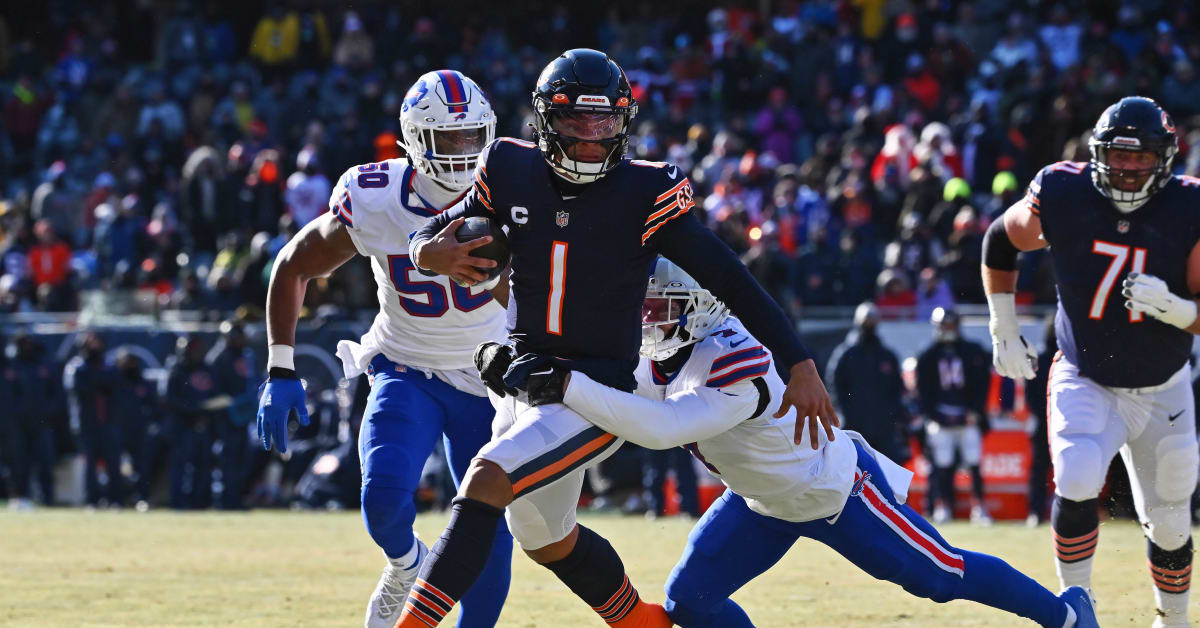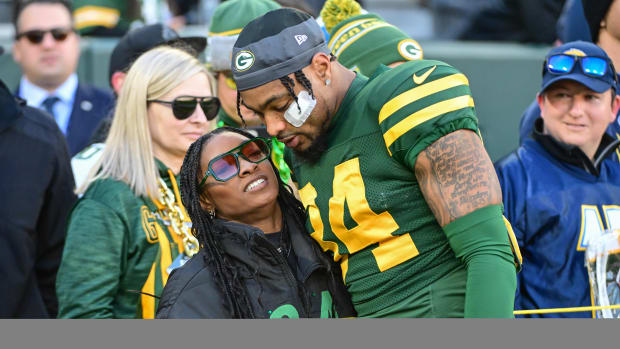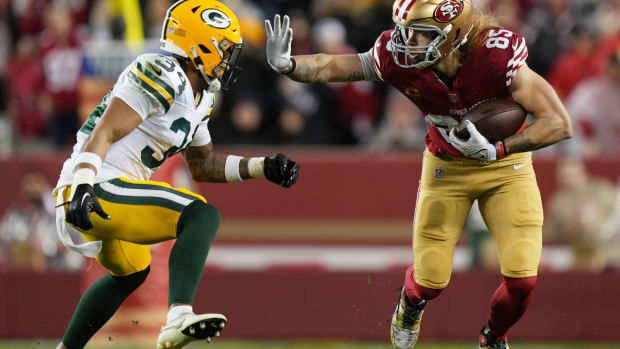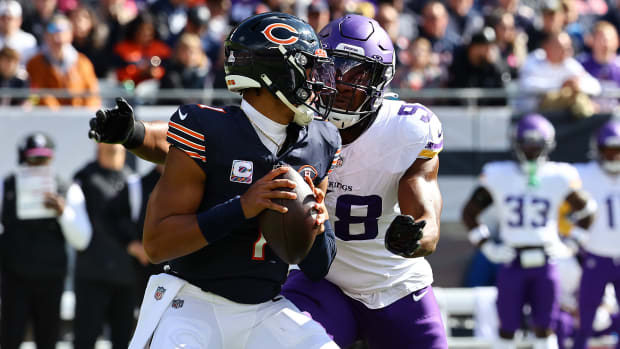Proper Backing for Justin Fields

The Justin Fields mania continues in these days just before phase 3 of the offseason work begins, which is on-field practices.
Bears GM Ryan Poles fuels it himself with the national media interview run he's been on in days after the rookie minicamp.
Talking to former Bears QB Jim Miller on SiriusXM, Poles said he agreed with Matt Eberflus' summation of what he has seen of Fields during Halas Hall work, the the QB has taken steps forward since last year.
"And I think some of it should be expected right?" Poles told Miller. "I mean, the guy has now had the same coordinator for the second year, same head coach, a lot of the same pieces and now he's getting some offseason time with Chase (Claypool) and DJ (Moore) while Mooney is recovering (ankle surgery)—and he'll be back soon, too."
It's not just seen in his physical play, but Fields' mental game.
"He's getting more confident," Poles told Miller. "I just love his body language and how he's approaching things as a leader as well.
"Usually as you go the game starts to slow down for you and that allows you to make decisions quicker. So we'll see how it goes but we're ecouraged by what we see right now."
Those are all good reasons to think Fields has improved. It's only natural to be better in the second year of an offense, as long as the coach didn't upgrade the attack way above his QBs head the way Matt Nagy did with Mitchell Trubisky in 2019.
The main reason one might expect a better Fields really are elements they've surrounded him with on the offense. Moore and Claypool with Mooney is a formidable receiving trio and are combined with two tight ends who have both had more than 50 catches in their careers.
"I wanted someone to come in and enhance our offense, enhance our quarterback, and really take us to the next level to score more points, to be more explosive," Poles told Cynthia Frelund of NFL.com. "Once those pieces came together, I was ready to roll."
It all goes back to what happened with Josh Allen in 2020 and last year with Jalen Hurts and the Eagles. They brought high-level receivers in, the Eagles A.J. Brown and the Bills Stefon Diggs.
Have the Bears really done this for Fields, though?
Moore Comparison
Moore actually has comparable stats to those two receivers mentioned as game-turners for their quarterbacks.
He has one less catch than Diggs made in his first five years before going to Buffalo. Moore had more yards per catch (14.3 to 12.7) while Diggs had 30 TD catches to 21 by Moore—a stat easily explained by the poor QB situation in Carolina for all five of Moore's seasons.
Brown was a bigger-play receiver in Tennessee with 24 TDs in his first three years than Moore, but averaged less than 1,000 yards a year his first three years while Moore averaged 1,052 yards a season his first three years and actually has been over 1,000 yards for an average on five seasons, which is more difficult.
Moore averaged 15.2 yards per catch his first three seasons and Brown 16.2 for his three seasons prior to going to the Bills.
The numbers are comparable except for the touchdowns but Brown's big advantage in Tennessee was he played in an offense where defenses had to completely sell out to stop one player and it left other players open. That would be running back Derrick Henry. It's not as difficult to be a big threat in the red zone when everyone is keyed to stopping Henry.
Surrounding Cast
A No. 1 receiver benefits if there are players around him who can balance out the attack, remove pressure and take catches. The Bears would appear to have this taken care of with Claypool, Mooney and two tight end receiving threats in Cole Kmet and Robert Tonyan Jr.
The cast they put around Moore appears no less dangerous than the one the Bills put around Allen and close or on par with what the Eagles assembled around Brown.
Claypool and Mooney have comparable stats for their first three seasons, although Mooney had the disadvantage of going out in Week 11 last year due to his ankle injury. Claypool has 167 catches, 167 catches, 2,184 yards for 13.1 yards a catch and 12 TDs, while Mooney has 182 catches for 2,179 yards, 12 yards a catch and 10 TDs.
Kmet and Tonyan both have been over 50 catches twice in their careers. Kmet has nine TD catches and Tonyan 17.
None of the Buffalo tight ends on the roster when Diggs came to the Bills offense had more than 24 receptions that season. The other wide receivers were formidable but Cole Beasley was 31 years old then when he made 82 catches for 967 yards and four TDs in the slot and Gabe Davis had just 34 catches but for 599 yards with seven TDs.
The Eagles had explosive DeVonta Smith as a complementary receiver to Brown and he had a 1,196-yard 2022 season with seven TDs and 95 catches, seven more than Brown made. But Brown had 1,496 yards and 11 TDs. They also had Dallas Goedert, who made 55 catches. The next-biggest receiving threat was Quez Watkins, who made 33 catche last year and has averages 27.7 catches a year.
While the Bears can't call their No. 2 or 3 receivers as explosive as Smith, the two together are as good or better than the Smith-Watkins combo. Goedert is one of the league's best tight ends, but the Bears have two tight ends capable of more than 50 catches.
The bottom line in all of these changes the Bears made is it's easy to see they've put viable, productive targets around Fields to let him succeed.
Now the rest is up to the Bears QB along with the coaching staff.
Twitter: BearDigest@BearsOnMaven






